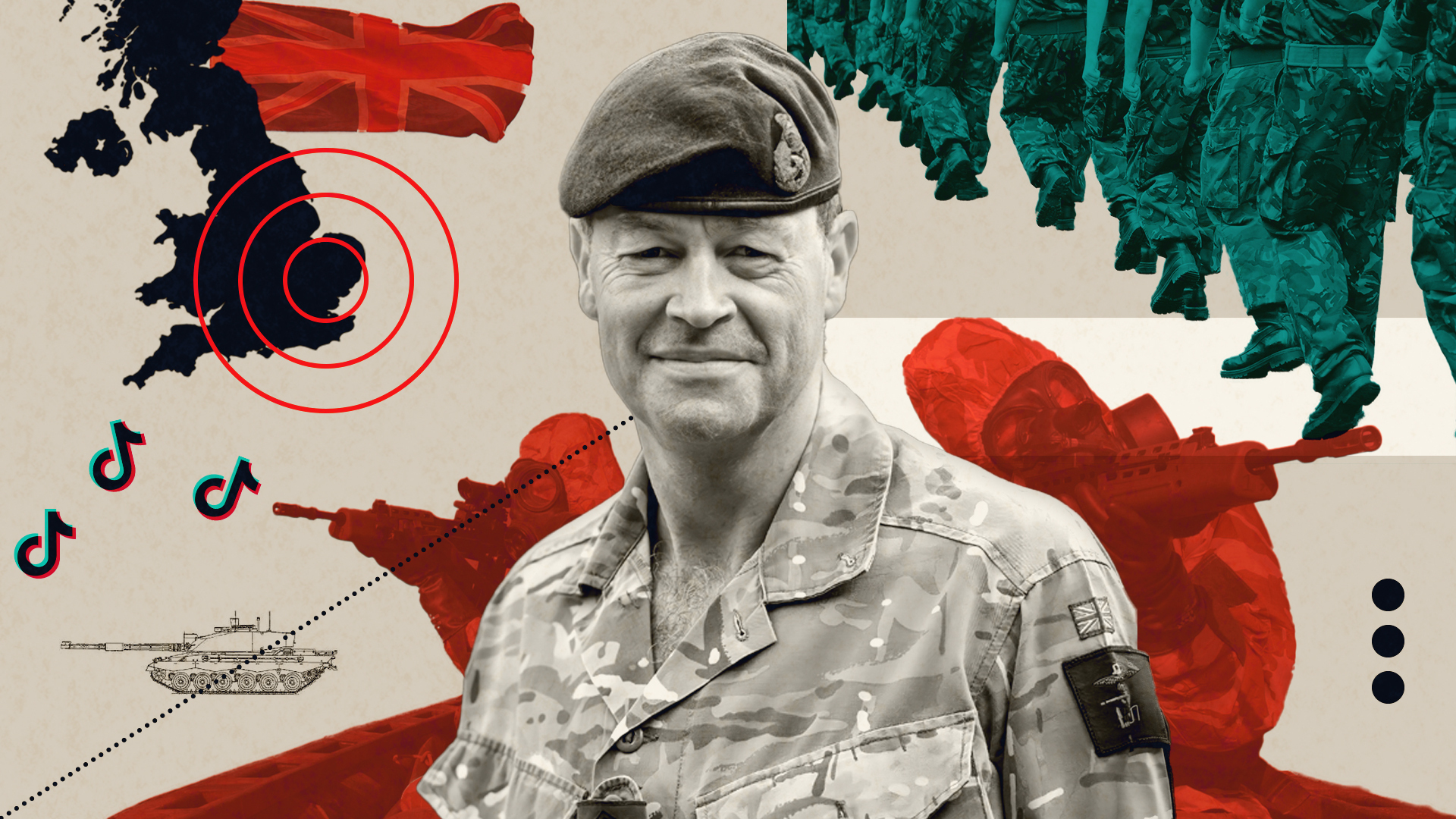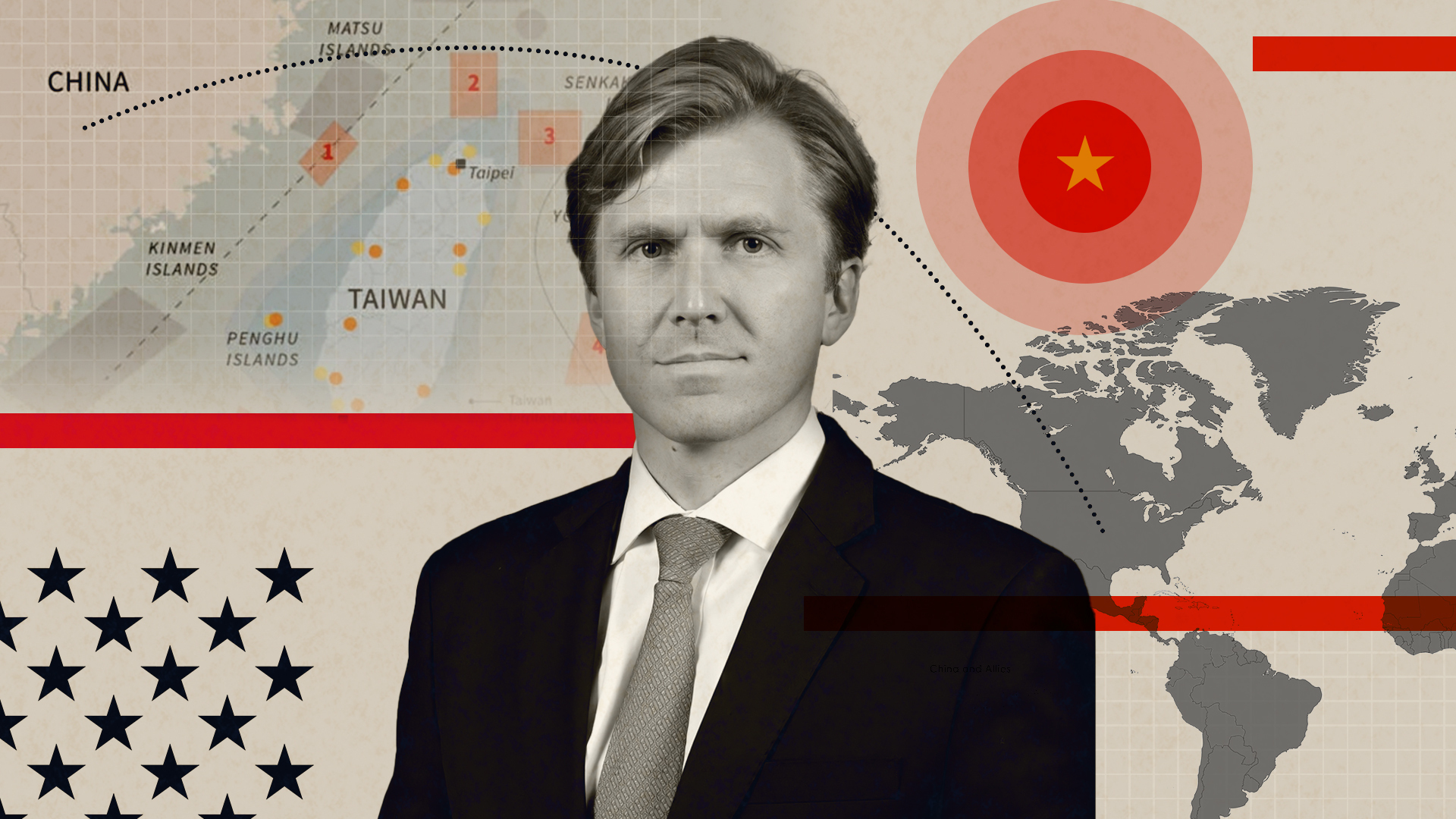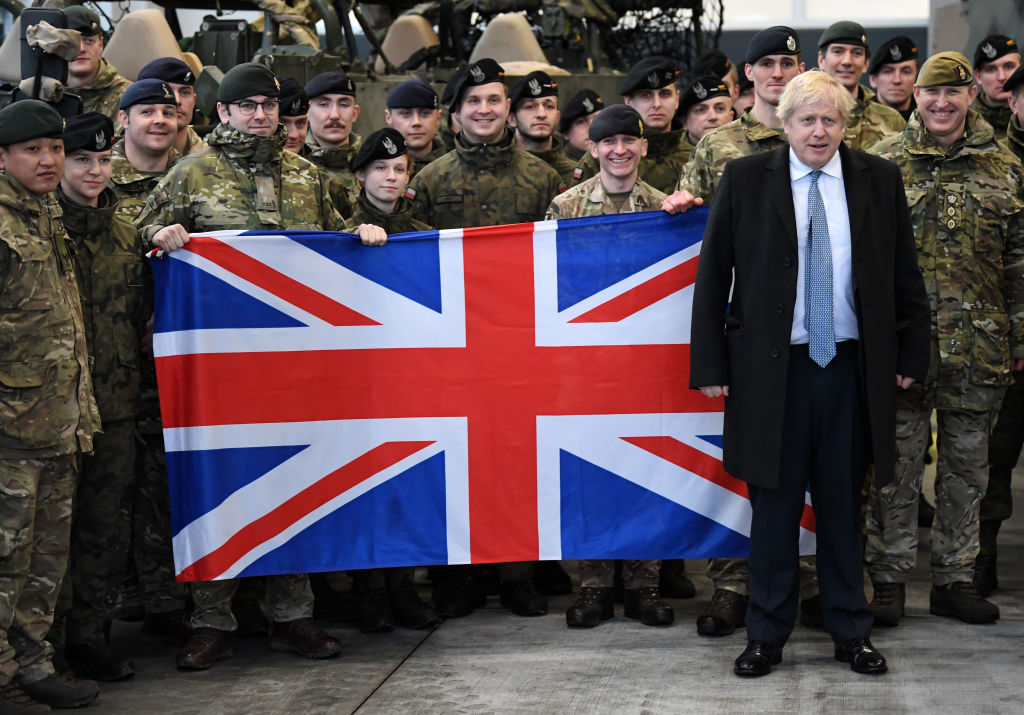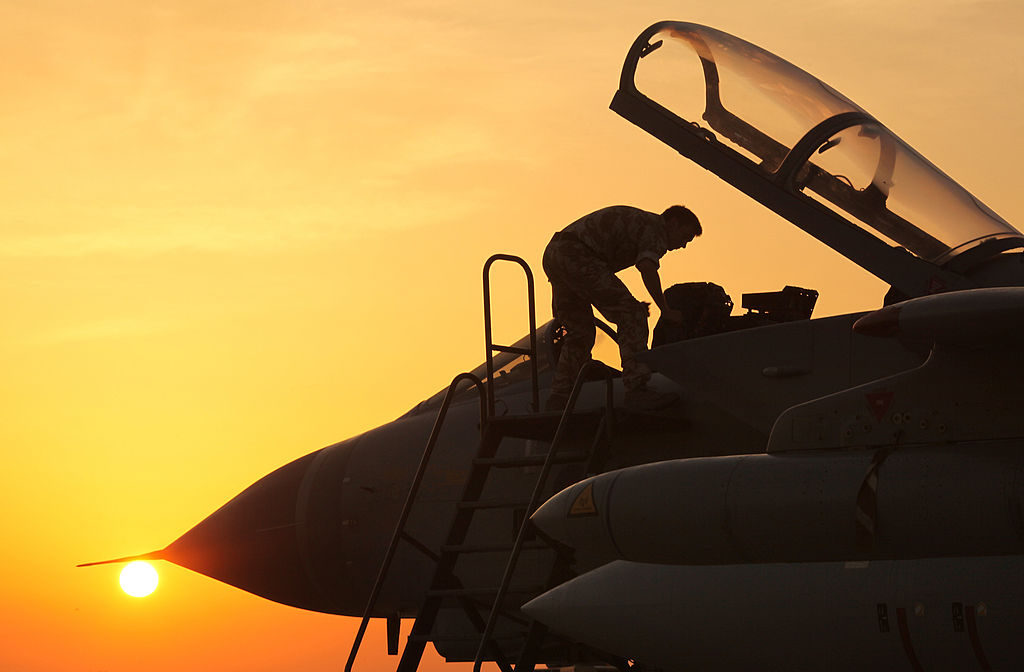Will 2024 be the year of a Third World War? As Russia’s war in Ukraine grinds on, the Middle East threatens to erupt, and China intensifies its military pressure on Taiwan, a global conflict seems all but inevitable.
How strange, then, that Britain’s Armed Forces are unprepared to defend their country. Over the past month, an increasing number of military insiders have been sounding the alarm, warning that, if we are to survive, we may have no choice but to enlist a “citizen army”.
The truth, however, is even more concerning.
As Aris Roussinos reveals in this Special Report, it may be too late to guarantee Britain’s survival. Decades of political indifference and dismal procurement strategies have left our Armed Forces outgunned and obsolescent. And with military insiders increasingly expecting a land conflict with Russia, Britain now faces an uncomfortable question: is the coming war already lost?
Read on to learn about:
- Russia’s ability to expose Britain’s weakness
- The dismal state of Britain’s Armed Forces
- A catalogue of procurement fiascos
- How we were crippled by support for Ukraine
- Can Britain build a new army?
- Why we must pivot towards the air and sea
How close is Britain to all-out war? It would be comforting to assume that all the recent warnings from defence officials are mere hyperbole. But quite the opposite is true: as it stands, there is a very real risk that the British Army will be politically committed to fighting a land war against Russia in eastern Europe within the next five years. Without American support, we are on course to lose.
When the Chief of General Staff, General Sir Patrick Sanders, claimed last week that “we need an army designed to… equip the citizen army that must follow”, the debate it produced centred on whether Britain is now too woke or too ethnically diverse to sustain mass conscription, while also considering whether the Britain of 2024 is even worth fighting for. While these are valid questions, the broader context — the idea of a land war against Russia — was left largely unexamined.
Yet Sanders’s warning was not without precedent. In 2022, he declared that this is “our 1937 moment”, in which the British state had a few short years to mobilise industry and modernise the Army on a war footing, with the aim to avert a war if possible, or at least not lose if one began. But if 2022 was 1937, by Sanders’s reckoning, 2024 is 1939 — and this work has not been done.
Russia will expose Britain’s weakness
In 2022, even as Russian troops found themselves bogged down and on the back foot in Ukraine, Sanders presciently cautioned observers that “historically, Russia often starts wars badly”. Thanks to “its depth and resilience”, however, it “can suffer any number of campaigns, battles and engagements lost, regenerate and still ultimately prevail”. While Russia’s slow progress initially birthed a crowing sense of overconfidence among British commentators and Ukraine’s online cheerleaders, Sanders warned: “Putin’s declared intent recently to restore the lands of ‘historic Russia’ makes any respite temporary and the threat will become even more acute. We don’t yet know how the war in Ukraine will end, but in most scenarios, Russia will be an even greater threat to European security after Ukraine than it was before.”

A year and a half later, Ukraine is firmly on the back foot, and while Russia’s gains on the ground are slow and costly, Putin’s mobilisation of his vastly larger economy and population towards the war effort mean that, over the course of the next few years, Russia’s prospects of victory will become more likely, while Ukraine’s will dwindle. To defeat Russia, in the current reality, means not recapturing lost territory but blunting the Russian advance at such cost to Putin that negotiations to freeze the conflict become a more attractive prospect than total military victory. In pursuit of this goal, Ukraine has been dependent on a constant flow of war materiel from the United States which has now ceased, and on a rapid scaling up of Europe’s military-industrial capacity that has not manifested. Just to stay in the fight, Ukraine will be forced to conscript half a million men from a civilian population increasingly unwilling to fight in a war that has caused the country, according to Sanders, “hundreds of thousands” of casualties.
Indeed, the unspoken assumption in military circles is a scenario in which Ukraine loses the war against Russia, perhaps next year or the year after. And if this happens, Putin will then turn his gaze to eliminating Nato as a threat to Russia by launching a war on the alliance’s eastern frontier. The United States will be too preoccupied with its confrontation with China to take part, and European armies, including Britain, are too under-equipped to win. As Sanders warned two years ago: “Given the commitments of the US in Asia during the Twenties and Thirties, I believe that the burden for conventional deterrence in Europe will fall increasingly to European members of Nato and the JEF [Joint Expeditionary Force].”
Giving evidence last summer to the Commons Defence Select Committee, the RUSI analyst Justin Bronk suggested that Britain’s “window of vulnerability is probably late 2026 to about the end of 2028”. That is, he cautioned, “the maximum window of vulnerability for a Chinese-American clash in the Pacific”, as, due to Pentagon procurement errors, this is the period in which Chinese naval power in the Pacific will overmatch the American forces they are rapidly preparing to confront.
As Bronk has warned elsewhere, “in the event of such a military confrontation with China in the mid-to-late 2020s, Russia will have a strong incentive to take a once-in-a-lifetime opportunity to break Nato while the US cannot reinforce Europe effectively. By 2026-2028, Russia’s industry will have been at full-scale military production for years, allowing it to rebuild its increasingly battle-hardened forces.” It is because of this likely scenario that prominent US strategic thinkers such as Elbridge Colby, who would be expected to play a major role in a future Trump administration, have warned that “America must first and foremost ensure that it can defeat China in a conflict, and Washington no longer has a military capable of fighting two concurrent wars”.

With a laser focus on America winning a war against China, Colby makes clear that “European Nato needs leadership” — and Britain should fulfil that role. Bronk implicitly acknowledges this, warning that: “We must plan on the danger that, if the Americans are more than occupied, they will not just be unable to reinforce Europe; they will be pulling things out… in all domains, because the threat is really huge in the Indo-Pacific. I would ask people in the country as well: how secure would you feel against Russia in Europe, given it will continue to mobilise long after Ukraine fighting stops, if the United States is not coming to save us?”
The only answer is: Not very. According to one recent study, based on the volume of artillery fire in the Ukraine war, the British Army would run out of munitions after eight days.
The dismal state of Britain’s Armed Forces
If Russia defeats Ukraine, and then launches an incursion against Nato in Eastern Europe while the US fights the greatest war in its history in the Pacific, then Britain is committed to fighting Russia on land in Europe without significant American help. This is not a scenario for which British defence planning has geared the Army to undertake, and is not a war the Army is currently capable of fighting.
Everyone is aware that the British Army is too small for its stated task. From 109,600 troops in 2000, the Army had shrunk to a mere 80,500 in 2022. As Sanders warned: “If this battle came, we would likely be outnumbered at the point of attack and fighting like hell.” And yet, in the year and a half since, the Army has shrunk to 76,950, and is on course to shrink further to 73,000. Sanders has resigned in protest. To put these numbers in context, Russia has currently deployed 40,000 troops in its current operation to seize the small Ukrainian town of Avdiivka, just one front in a series of Russian offensives taking shape over the coming year. Yet it is perhaps under-appreciated that not only is the Army too small for its purpose, it is vastly under-equipped for the coming task.
The most sobering evidence of Britain’s shoddy preparation for our increasingly dangerous strategic environment can be found in the testimony of Armed Forces chiefs and military experts to the Commons Defence Select Committee. Its 2021 report on the state of Britain’s armoured capability put its conclusions in its title: “Obsolescent and outgunned.”
As it warns: “Were the British Army to have to fight a peer adversary — a euphemism for Russia — in Eastern Europe in the next few years, whilst our soldiers would undoubtedly remain amongst the finest in the world, they would, disgracefully, be forced to go into battle in a combination of obsolescent or even obsolete armoured vehicles, most of them at least 30 years old or more, with poor mechanical reliability, very heavily outgunned by more modern missile and artillery systems and chronically lacking in adequate air defence. They would have only a handful of long-delayed, new generation vehicles, gradually trickling into the inventory, to replace them.” Due to “bureaucratic procrastination, military indecision, financial mismanagement and general ineptitude”, for which the Army’s leadership is, if anything, more responsible than the Government, “we are still some four years away from even being able to field a ‘warfighting division’, which, itself, would now be hopelessly under-equipped and denuded of even a third combat brigade”.
As Brigadier (Retd.) Ben Barry, Senior Fellow for Land Warfare at the International Institute for Strategic Studies, warned the enquiry: “The reduced UK division”, which would be Britain’s initial land contribution to a war against Russia, “has half the anti-armour capability, only 30% of the tanks of a Russian tank division, two-thirds of the armoured infantry fighting vehicles, 20% of the anti-tank guided weapons and 15% of the self-propelled artillery. It would be very difficult for that reduced division to stop a Russian tank division. A Russian tank division would seriously overmatch the reduced Third Division. ‘Overmatched’ is a very polite, clinical way of saying ‘could be defeated’.”
As another expert witness, the defence consultant Nicholas Drummond, observed, Russia outguns the British Army in a number of areas: “The first is artillery. It needs to do a wholesale renewal of its artillery systems.” The second is the British Army’s “ability to fire anti-tank missiles from under armour. It does not have that ability. It urgently needs that. The third missing capability is air defence. We are woefully short, and we would get absolutely spanked if we went to war without investing there.”
A catalogue of procurement fiascos

Since 2021, even those timelines have slipped, and capability has worsened since then. Britain’s armoured fleet consists of Challenger 2 Main Battle Tanks, CVR(T) reconnaissance vehicles, Warrior Infantry Fighting Vehicles and FV432 Armoured Personnel Carriers. By the middle of this decade both the FV432 and CVR(T) will be approaching 70 years in service: indeed, CVR(T) was partly designed to fit between the trees in Malayan rubber plantations. Warrior and Challenger 2 entered service in the Eighties and Nineties and are also reaching the end of their working life. Yet the joint MoD and Army “fiasco” of procuring their replacements has left the Army waiting for new armour that will not enter service until the end of the decade at the earliest.

The long-delayed Ajax Armoured Fighting vehicle, whose vibrations cause the troops inside debilitating injuries, may enter service in 2030: the Army is “cautiously optimistic” on this point. According to Select Committee evidence, the upgraded Challenger 3 is expected to enter service in tiny numbers — 18 — by November 2027, and its full complement of 148 by December 2030. The wheeled Boxer family of armoured vehicles will see 27 enter service in 2027, not reaching its full complement of 623 units until 2032. As the Committee Chair Tobias Ellwood remarked: “The full complement will not come into service here until the 2030s, when we can start doing our all-arms combat. Until then, we have a mix and match of old and obsolete kit, with the stuff that is coming online.”
If Britain goes to war in the mid-2030s, it will do so with a small but modern armoured force. Unfortunately, as we have seen, the war may already be over by then. As Bronk warned the committee, if the MoD was tasked with providing “a backbone of European deterrence against Russia, with credible warfighting capabilities in Europe in the next three to five years”, and resourced to do so, it will still take “five to 10 years to build that force”.
Crippled by support for Ukraine
If Britain goes to war with Russia within the timeframe our military leadership fears, it will do so with the Army we have, or can quickly build in the next few years. And as the RUSI analyst Jack Watling warned in 2020, the Army we have is not equipped for the task: “The UK lacks ground-based air defences and deployable long-range precision fires… Its heavy armour is under-gunned, its protected mobility is worn out, its artillery is outranged, its logistics are under-resourced, its deployment is too slow, and its ammunition stockpiles too small to deliver the effect for which it is designed.”
Due to well-meaning political decisions, which have not been matched by a sense of urgency in rebuilding the Army, the situation has deteriorated further. The donation of 14 Challenger 2 tanks to Ukraine, along with AS90 self-propelled artillery systems, M270 rocket launchers and L118 Light Guns, FV432s and significant quantities of anti-armour munitions and artillery shells “will leave us temporarily weaker as an Army, there is no denying it”, Sanders warned a year ago. “There is no doubt our choice will impact on our ability to mobilise the Army against the acute and enduring threat Russia presents and meet our Nato obligations.”
As Watling cautioned in 2022, “UK anti-tank guided missile (ATGM) stockpiles have now been significantly depleted — having been gifted to Ukraine — leaving British units toothless. With the announcement that the UK’s MLRS are also going to be sent to Ukraine, the punch that was supposed to buy out the UK’s lethality in the close fight is about to be stripped from the order of battle. The already woefully inadequate stockpiles of rockets for these systems are now to be expended.” As one senior defence source told the press: “We’ve given away pretty much everything we can afford to give…” As another warned: “The PM’s wartime approach is currently to cut the Army, hollow it out further by gifting [equipment to Ukraine] and with no plans to replace [the weapons] for five to seven years.”
Britain’s Nato commitment to the ground defence of Eastern Europe is an armoured division by 2025. Unfortunately, this division does not exist. As RUSI observed in 2022, the “current force comprises two armoured regiments of obsolete tanks, while one brigade has been converted to a medium-weight Strike Brigade. This forms the core of the UK’s current land contribution to Nato’s conventional ‘hard power’ in Europe to deter Russia.”
Moreover, as Ellwood notes of those two tank brigades: “We have just one brigade deployed in the Baltic right now and it is going to take days, if not weeks, to bring that up to divisional strength. Bear in mind that if the Russians cross the border into the Baltic, that second brigade is going to be under attack all the way from the UK into the Baltic area. Our lines of communication are certainly going to be hit, and hit very hard.” In fact, it is doubtful that even the single existing brigade is currently fit for its commitment, according to the defence analyst Francis Tusa.
In the air, too, Britain will be heavily outgunned, outranged and outnumbered by its opponent. Because Nato’s SEAD capability — the ability to search and destroy enemy Surface-to-Air Missiles — is dependent on the US, for the first time since midway through the Second World War, Britain cannot expect air superiority and must work on the assumption that any build-up of forces will be both visible and vulnerable far behind the front line. Under-equipped on almost every front, Britain is heading towards military defeat.
Can Britain build a new army?
The question is what to do now. As long as Ukraine stays in the fight, Russia will not be able to expand the war, providing Britain and the rest of Europe with breathing space to rebuild military capacity. But enabling Ukraine to do so requires a vast, Europe-wide effort to produce munitions in the quantity sufficient for full-scale war. And in the two years since the war began, Europe has not achieved production sufficient for Ukraine’s own needs, let alone rebuilding Nato stockpiles. Unless this work is done now, the looming war will be lost almost before it has begun.
Even if this level of production is reached, a question mark hangs over Ukraine’s ability to conscript the manpower necessary to survive the coming war: Europe’s year or two of breathing space will be very costly in human lives for Ukraine, without even guaranteeing the country victory at the end of it. In that short space of time, Britain will need to marshal its existing resources — which means shifting its focus to training Ukrainian troops rather than gifting Ukraine our dwindling stockpiles of equipment — while converting what remains of British industry to a war economy.
Yet a country that cannot produce its own steel, and is dependent on nations that will be either open rivals or detached observers for much of its imports of raw materials, is hardly geared towards a wartime-level of production. In the short term, Britain could engage in a frantic spending spree, buying off-the-shelf armour from European allies, as it should have done years ago. But even here, whether Britain could outcompete equally panicked European allies for limited production is questionable. The recent acquisition of 14 ARCHER artillery systems to replace equipment donated to Ukraine shows that, while far short of the investment needed, a rapid procurement programme could swiftly bring results.
Ultimately, Britain needs to rapidly pool resources and production with European allies, based around a standardised, interchangeable suite of capabilities. Drummond suggests a five-year spending drive to buy Boxer armoured vehicles, anti-tank munitions, drones and long-range artillery, while increasing the Army to a size of 90,000 formed in eight brigades — all at a cost of an extra £10 billion defence spending a year, solely focused on the Army. This is a useful baseline level of thinking, but whether the political will exists is doubtful: the two controversially expensive aircraft carriers came to around £8 billion in total, while the Guardian’s lofty declaration that defence spending “should take a place in the queue” behind council funding and fighting climate change suggests that the British political class has no understanding of what the country is very shortly going to be tasked to do, the amount of effort and pain it will take, and the level of spending it will require.
A pivot towards the air and sea

Any future war would not be easy for Russia: the war in Ukraine has re-emphasised that, in modern warfare, the defending side holds a strong advantage. Britain would not fight alone: it would fight alongside the small but capable Baltic armies, currently building a joint defensive line along the Russian border, the currently more effective French Army, the German Bundeswehr and the rapidly expanding Polish army (whose defence procurement and recruiting effort, at much less cost, should shame Britain), as well as Sweden, Finland and other nations. Britain’s land contribution has been so woefully managed that we should expect to play a supporting role, perhaps under European command.
But perhaps we should rethink the question from first principles: the Army is the weakest link in the Armed Forces, and as it stands threatens to be the weak link in Nato’s ground campaign, which itself means it will be disproportionately targeted by Russian fire. Given how things stand, should Britain be frank with the rest of Nato about the state of our Army, and shift our contribution to our better-resourced Air Force and Navy?
As Watling warned in 2022: “if the UK feels it can no longer resource a war-fighting capability then this must be the starting point from which UK strategy develops, and extensive and difficult conversations with allies must be initiated.” Perhaps the time has come to warn Nato that we’re going to be late handing in our homework.
At some time in the 2030s — all things being well — Britain will possess a functioning Army, but until then it does not. A weak and underpowered British land commitment in Europe threatens to become a drag on Nato’s capacity, a burden rather than a gift. Should a war break out this decade, Britain has three choices: to go to war with the Army we have, and lose; to spend the next few years rapidly building up the Army, at vast cost; or to admit in good time that the Army will not be functional this decade, and shift Britain’s contribution to a European war to the air and sea. These are fundamentally political decisions, each of which will be controversial, and which require a degree of political leadership and popular legitimacy the current government, in its waning days, does not possess.
As the historian Robert Lyman observes: “We have opened ourselves up to a shock of very significant proportions.” This is the insufficiently-understood context in which the current conscription discourse, essentially a debate on how to quickly replace our currently-existing Army, which has been set up for defeat, exists. But unlike 1914 or 1940, there is no strategic hinterland of booming factories and willing volunteers to fall back on. There is no Empire to come to Britain’s aid, Russia’s resources will be pitted against us, and the United States will be hard-pressed with its own war against the world’s greatest industrial power.
As Watling warned two years ago: “The old British tradition of losing the early battles but winning the war does not work when it takes years to build sophisticated modern military equipment. In short, if deterrence fails, and the Army is not appropriately provisioned, there will be no comeback. There will simply be defeat.”
Disclaimer
Some of the posts we share are controversial and we do not necessarily agree with them in the whole extend. Sometimes we agree with the content or part of it but we do not agree with the narration or language. Nevertheless we find them somehow interesting, valuable and/or informative or we share them, because we strongly believe in freedom of speech, free press and journalism. We strongly encourage you to have a critical approach to all the content, do your own research and analysis to build your own opinion.
We would be glad to have your feedback.
Source: UnHerd Read the original article here: https://unherd.com/

